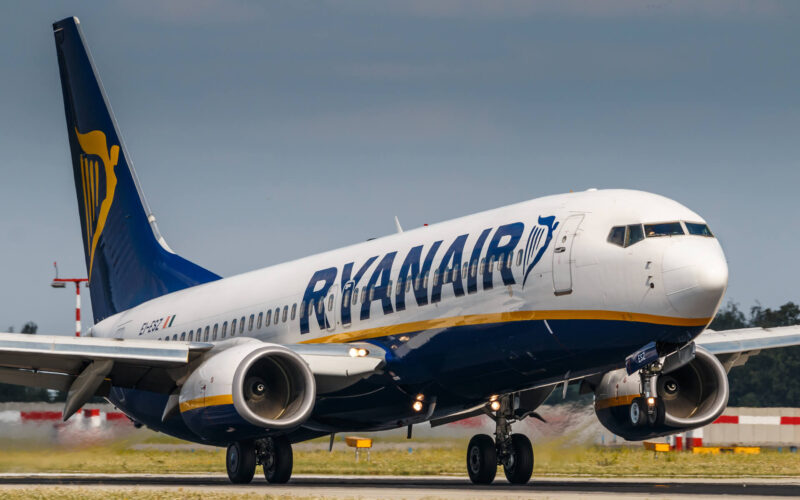Most recently, Ryanair hit the headlines over the fact that the Italian civil aviation authority (Ente Nazionale per l’Aviazione Civile, ENAC) threatened the low-cost carrier with a ban from Italy, as it failed to comply with COVID-19 preventative procedures. But the relationship between Ryanair and Italy became problematic as soon as the pandemic hit. Spain, meanwhile, was the shocked girl as the Irish airline turned its head around to take a sneak peek at Italy.
At the beginning of March 2020, as the number of COVID-19 cases exploded in Italy, Ryanair initially canceled 25% of its flights to the Southern European country, citing the drop in demand seen from the reduction in forward-looking bookings and an uptick in no-shows on flights to/from Italy. The announcement came on March 2. Seven days later, on March 9, the airline announced further cuts to its flight network in Italy, especially the Northern part of the country.
On March 10, starting March 11, Ryanair suspended all domestic flights within the country. Starting March 13, the low-cost airline suspended all international routes.
And the company’s traffic results for the coming months showcased that – throughout March, April and May 2020, Ryanair carried 5.7, 0.04 and 0.07 million passengers, respectively, accounting for a 48%, 99.6, and 99.5% drop in passenger numbers compared to the respective month in 2019.
One of its main low-cost rivals, Wizz Air, meanwhile, saw a 35.6, 97%, and 96.4% drop. In June, however, the Hungary-registered company saw a slight recovery, as passenger traffic decreased by 86.1%. Ryanair saw a very marginal recovery and only carried 97% of passengers in June 2020 compared to the same month a year prior.
Reliance on Italy and Spain
As the wave of COVID-19 infections rolled around Europe, Italy and Spain were one of the worst-hit countries in the continent. As of August 7, 2020, Spain registered the most cases in Europe, while Italy stands in third place, behind the United Kingdom.
In 2019, Ryanair carried 142.4 million passengers throughout its short-haul network in Europe. ENAC data showcases that in 2019, the low-cost carrier transferred 40.5 million passengers to, from, and within Italy. AENA, the company that operates Spain’s airports, indicated that the Irish airline carried 50 million passengers from and to the largest country in the Iberian Peninsula.
Thus, traffic from Italy and Spain accounted for 63% of Ryanair’s total 2019 passenger numbers, making up a very sizeable proportion of the carrier’s income. When governments around the Mediterranean Sea announced that they would open up their borders starting July 1, 2020, the Irish company was ecstatic.
“Irish and British families, who have been subject to lockdown for the last 10 weeks, can now look forward to booking their much-needed family holiday to Spain, Portugal, Italy, Greece, and other Mediterranean destinations, for July & Aug before the schools return in Sept,” stated Ryanair’s chief executive officer (CEO) Eddie Wilson.
But Ryanair, seemingly, was an exception.
easyJet, for one, carried 96.1 million passengers throughout 2019 – combined ENAC and AENA data shows that Italy and Spain accounted for 36.1 million travelers, or 37.5% of its total traffic came from the two South European countries. The aforementioned Wizz Air, which carried 42.5 million passengers in 2019, transported 5 million people from and to Italy, while AENA did not indicate how many travelers boarded a purple-painted Airbus A320 family aircraft, as Wizz Air did not make it into the top 15 airlines in the country. The 15th, Condor, achieved 3.4 million passengers in 2019.
This means that Wizz Air’s exposure to the combined Italian and Spanish markets was less than 20%, possibly going below 18%. But despite the current crisis, neither of the low-cost carriers are giving up on Italy, for example. When Wizz Air surprisingly announced a base expansion in May 2020, Milan, Italy was one of the new bases. On July 14, 2020, the company announced 14 new routes from Italy to Ukraine.
However, the newly enacted routes by the Hungarian airline was in response to Ryanair’s announcement in July 2020, when the Irish low-cost announced 16 new routes from the same pair of countries.

